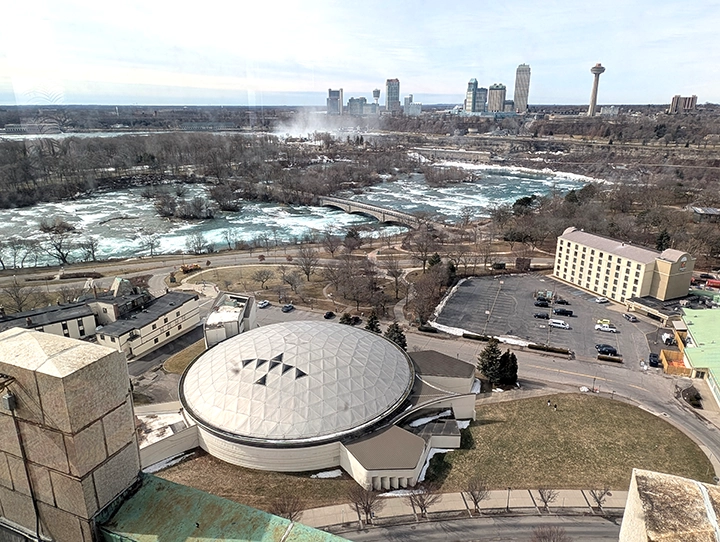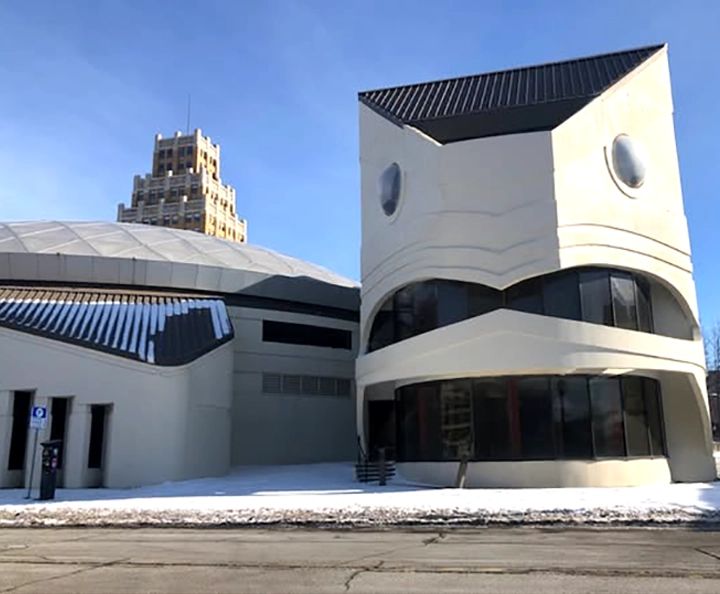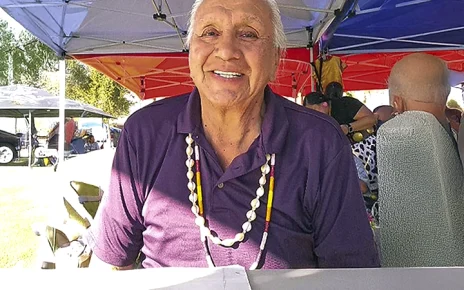The National Trust for Historic Preservation has named the iconic Turtle building in Niagara Falls NY to its 2025 list of America’s 11 Most Endangered Historic Places. The annual list “raises awareness about the threats facing some of the nation’s greatest treasures,” according to the organization’s website https://savingplaces.org/
The designation of the Turtle as one of this year’s 11 sites nationwide was announced May 7, 2025 by the National Trust for Historic Preservation.
Friends of the Niagara Turtle held a press conference at Cataract House Park, 110 Old Main St. in Niagara Falls, between the Turtle building and Niagara Falls State Park addressing the issue.
Speaking at the press conference was Shaun Wilson (Mohawk, Turtle Clan), board chair of Friends of the Niagara Turtle, and Di Gao, senior director of research and development for the National Trust. Doh-Bid Pierce (Seneca, Hawk Clan) performed a new song dedicated to the Turtle.
Carol Quillen, president and CEO of the National Trust for Historic Preservation, stated: “As we approach the 250th anniversary of the United States, we must acknowledge and support the Indigenous history that has so often been hidden and forgotten. The plans to ‘reawaken’ The Turtle would provide exactly the celebration of tribal heritage and culture that we need more than ever.”
The Turtle building, at 25 Rainbow Blvd., is an iconic building designed by distinguished Northern Arapaho architect Dennis Sun Rhodes. The three-story zoomorphic building has 67,000 sq. ft. with eagle skylights. Its unique shape, with a geodesic dome roof “shell” and large porthole “eye” windows, invokes the Haudenosaunee creation story of the earth forming on the back of a giant turtle. After closing in 1995, the building has remained vacant, with its future preservation and use in question, an asset lost to the Western New York community — and beyond — for the last 30 years.

In the mid-1970s, the Haudenosaunee had developed a clear concern that their culture needed bolstering after the negative impact of the Indian boarding schools and centuries of the United States Government controlling nearly every aspect of tribal life. The Turtle’s construction was a result of continuing efforts on the part of the Haudenosaunee for self-determination and preservation of their arts and culture.
In terms of architectural importance, as a prime and exceedingly rare example of a cross between Postmodern and Indigenous architecture, The Turtle’s design blends Postmodern approaches to anthropomorphism in conjunction with meaningful Haudenosaunee symbols and practices embodied in the function and form of the building.
For 15 years The Turtle served as a cultural center for the Native American community nationally; it was the largest center for Indigenous arts in the Eastern United States. Representatives from the Smithsonian Institution visited The Turtle and incorporated some of its features into the design of the Museum of the American Indian in Washington, DC.
Friends of the Niagara Turtle is a local community-based nonprofit group formed to promote landmark status for the building and to bring together interested parties to “reawaken the Turtle” as a viable Native arts and cultural center. The coalition includes Indigenous representatives, including the only tribally affiliated indigenous architect in New York, museum professionals, historic preservation specialists, tourism promoters and scholars.
Prior to the Announcement, the Friends of the Turtle are sponsored a walk along the Niagara Gorge in Niagara Falls NY in support of the efforts to save the Turtle building (the former Native American Center for Living Arts) and Re-Awaken the Turtle.
The National Trust for Historic Preservation is a privately funded nonprofit organization that works to save America’s historic places.




